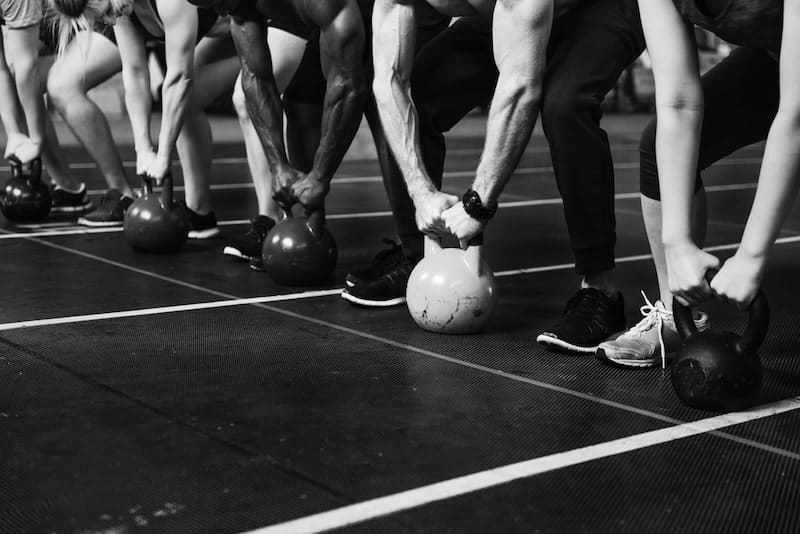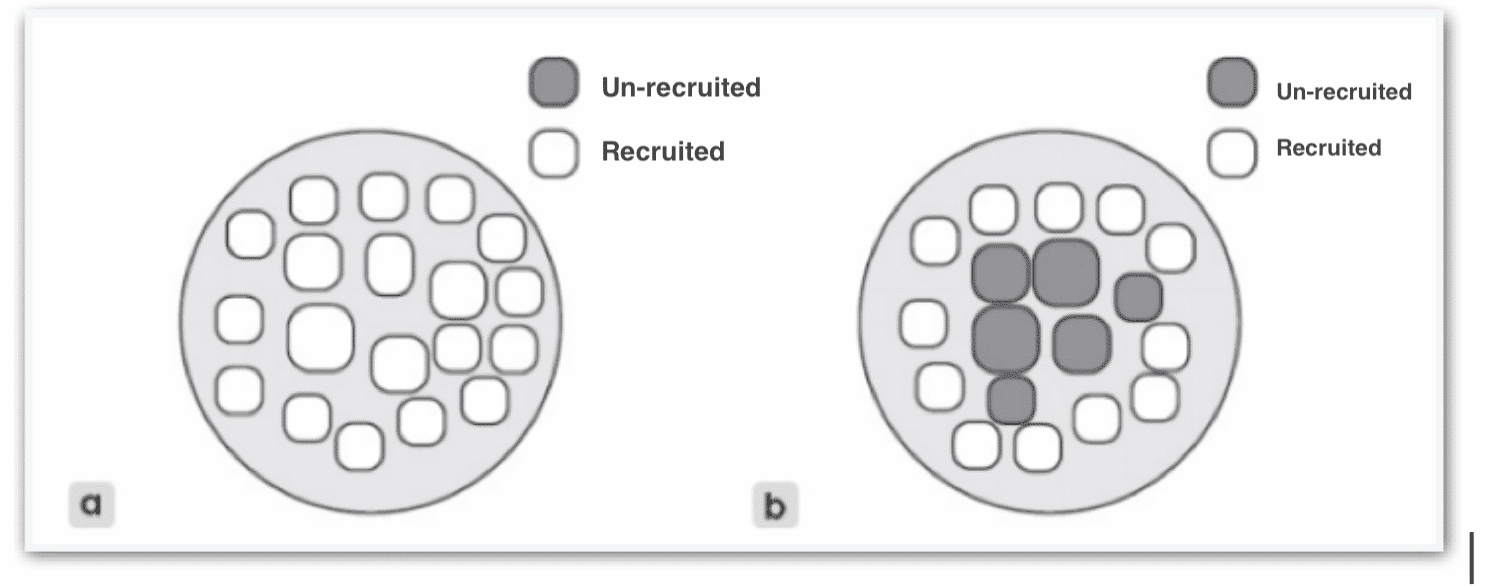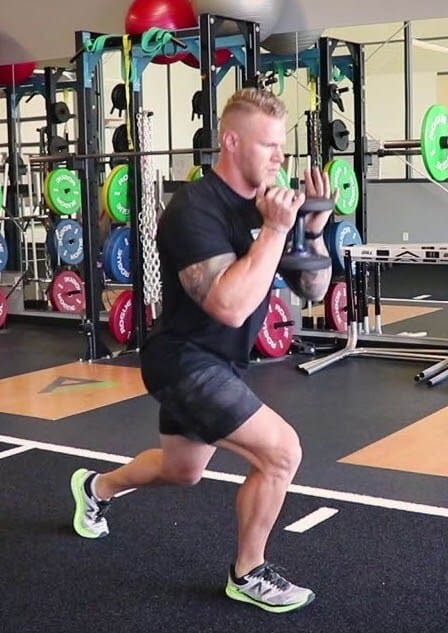3 de March de 2021
Strength training for athletes: 5 Pro tips to improve your strength
If you want to know 5 tips that you may have overlooked focused on improving your strength training, read on! Strength training has been proven to be an important part of any sport’s physical and/or athletic preparation.
But one thing you may not have thought about is, ok, I know that for my sport strength training will help me in many aspects, but… have you thought about the specific strength requirement you need in your sport, do you really know the movements you should train, and the benefits of unilateral training? Today we take a look at the latest scientific reviews.
Tip 1: Find the strength requirement of your sport.
The objective of strength training is to generate neuromuscular and structural adaptations that help us to be more efficient when facing grueling physical demands. We can classify sports according to the strength requirement that is necessary.
For example, a weightlifter or sprinter will have a high strength requirement, a tennis player or golfer will have a medium strength requirement, and a ping-pong player will have a low strength requirement.
Depending on the physiological demands of the sport, there are at least four phases that we must fulfill if we want to develop strength in our sport.
- 1st phase: anatomical adaptation.
- 2nd phase: period of maximum strength.
- 3rd phase: conversion to specific force.
- 4th phase: period of maintenance of strength levels.
All of them are important since each adaptation achieved serves as a precedent or foundation to continue in the process. The duration of each stage, the importance and the progress should be personalized by a knowledgeable professional to supervise the training process.
First phase of anatomical adaptation:
The goal is not to build muscle mass alone, although it could. The main objectives are:
- Strengthening of the connective tissue, tendons, ligaments and joints which achieve with a high volume of training and a clear objective.
- Increase bone mineral density (BMD).
This intends to prepare your body before needing possible rehabilitation.
The most beneficial methodology to achieve these two points is to increase the volume of training by increasing the time under tension, or – doing isometric or controlled eccentric exercises.
Repetitions between 30 and 70 seconds in unilateral exercises rather than bilateral, would be an adequate methodology.

Second phase of maximum strength:
In this phase, the objective is for the athlete to be able to improve their performance by having a better ability to transfer the maximum strength gains to the specific strength of their sport.
Maximum force depends on the cross-sectional area of the muscle (size), the ability of the central nervous system (CNS) to recruit fast-twitch muscle fibers, the frequency of activation, and the ability to simultaneously activate all muscles involved in movement.
Once the connection between mind and muscle is established, the physical demands of the sport determine the next phase.
There are applicable traditional methods, where you work with high loads and maximum breaks of 3 to 5 minutes. The concentric phase of the movement must be explosive in order to activate the fast-twitch fibers, responsible for generating force faster, in addition to achieving maximum specific hypertrophy.
In this phase, the objective is that sports performance betters thanks to the improvement of maximum strength.
Third phase of conversion into specific force
This is where we find the heart of the matter and where we really need to demonstrate improvements in specific strength training. Depending on the sport, three fundamental options precede it after the maximum strength development phase:
- Power conversion: we will use medium to heavy loads (40-80% of 1RM) with maximum speed intentionality.
- Conversion of power into resistance.
- Conversion into muscular endurance: this training can be short, medium or long duration. We will use a high number of repetitions, from 15 to 20 per series.
Fourth phase of maintenance.
Once the muscular system has been adapted after a period of time, through planning and perseverance, we must take into account that the body receives the minimum dose of stimulus so that the gains are maintained over time.
That is why, in competitive periods, strength training should be organized to maintain the benefits throughout the season.
More information: How to increase my weightlifting capacity with VBT
Tip 2: Know the specific motor pattern where you want to be strongest.
First of all, we are going to define specific motor patterns as the set of individual movements, acts or actions carried out by the human body that are combined into a whole make up a whole movement. More simply put: running, jumping, throwing, walking…
The central nervous system (CNS) is the main one involved in generating force and recruiting the necessary motor neurons for the required effort.
Like almost everything, this recruitment mechanism can also be trained and that is why the neural component of the expression of force comes to have an important weight.
Once you know the motor pattern you want to improve, you need to improve intermuscular coordination, or better said – the coordination between all the muscles involved in movement.
With training, repetition and experience of this pattern, the nervous system learns the gestures, activating fewer and fewer neurons for the same weight, movement or act.
This means before, we needed to recruit 10 motor neurons to hit a ball with the inside of the foot or perform a vertical jump, but with time and training, I will only need to recruit 6 motor neurons for that same hit or jump.

Fig 2. Example of motor neuron recruitment: Tudor O.Bompa. (2015). Periodization of sports training, Badalona (Spain). Editorial Paidotribo.
Continuing with the previous example … what happens now to the 4 motor neurons that I no longer recruit?
Well, these motor neurons that now are not activated for this gesture, become additional motor units for activation at higher weights.
Therefore, to increase the weight lifted in an exercise in the long term, the key to training is intermuscular coordination. We will achieve this by training the technique.
Specificity is linked to speed and load, as well as the motor patterns required to move that load. This is why your squat strength, for example, is conditioned by how familiar you are with that movement.
Tip 3: Modulate your training load.
Do not always train with the same load in your sessions. The variation will provide you with a greater amount of stimuli. When organizing your training either in microcycles, mesocycles or macrocycles, alternating the load will help you obtain greater benefits in your performance. The location of a micro-cycle of discharge at the end maximizes the adaptations, since we must bear in mind that recovery is part of the training and that without it, the improvements will not be able to establish solid bases in our organism.
To obtain the best results requires constant monitoring, evaluation and adjustment of the program. For this reason, listen to your body, assess performance objectively and trust the training process going through all its parts.
The demand for a workout should have a goal and be appropriate for the time of the season you are in. For this reason, it is important to periodize the training, since in the end, with the sum of the different training blocks, we will achieve an improvement in performance. Lear more about quantifying loads here.
Tip 4: work unilaterally.
As athletes, when executing movements, we tend to have a predominance on one side or segment of the body over the other and this can generate structural imbalances in the body if it is not controlled.
These imbalances can cause weaknesses that will eventually limit the effect of training on the organs and systems involved in functional movement. If there is a limitation in the effect that training can have on improving performance, we will end up limiting the evolution of our physical qualities, in this case referring to strength.
We must bear in mind that the body works as a single integrated unit when executing a movement, so the activity or participation of each organ and system is directly related, as well as directly limited. These decompensations can be found both in the upper body, lower body or in crossed patterns.
A very beneficial exercise that you can perform to work unilaterally, combining upper and lower body and core activation is: goblet walking lunge.
The forward lunge in the dumbbell goblet position is an exercise that requires core stability, a straight chest position, and the combination of the hip muscles with the spinal erectors. In addition, there are constant changes in body position and stance. It is important that when executing this or any other movement you are aware of which side is weaker to try to strengthen it and equalize it with respect to your dominant side or where you have more strength.
Fig 3. Goblet walking lunge
Another tool you can use is substituting the barbell for dumbbells with an alternate, not bilateral, execution. For example, a dumbbell row alternating between one arm and the other in the same series.
Tip 5: Without stability, we lose strength.
We need a solid and stable support base to be able to apply force efficiently and in our case, the main support base is the feet.
Stability does not mean stiffness or toughness, but rather the ability to counteract or withstand forces without losing efficiency in movement. So, we must take into account that there is movement in instability and our structures must be able to absorb it without harming us.
Instability, therefore, can be caused by many factors, both internal and external. There may be instability because our ligaments are damaged in our knee or because the surface where we run is irregular.
Therefore, we must bear in mind that instability is accompanied by muscle inhibition. This means that not always with a bigger muscle, we will be able to better counteract instability since this is what causes the “shutdown” of said muscle. A possible tool to help us in this situation is proprioception training since it will help us to know the position of the body in space during the activity.It is good to have good musculature, good spatial awareness and good balance.
Bibliography:
Bompa T. O., & Bozzichelli C. (2016). Periodization of sports training (4ª Edición). Les Guixeres, Badalona: España. Editorial Paidotribo


